GAMIFICATION OF HUMAN RIGHTS
Welcome to the portfolio of our human rights card game ARTICLE 1
INTRODUCING THE MEMBERS OF THE PROJECT
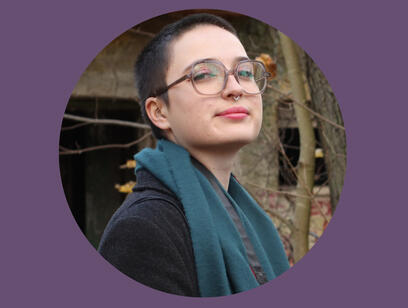
Philomène Perroches
Team Leader
Crossmedia
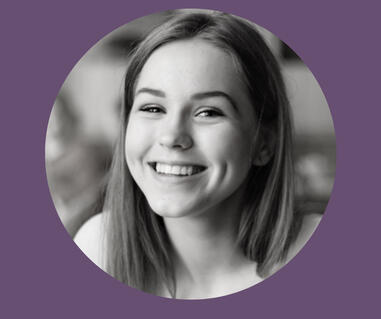
Laura Kurvits
Researcher
Law
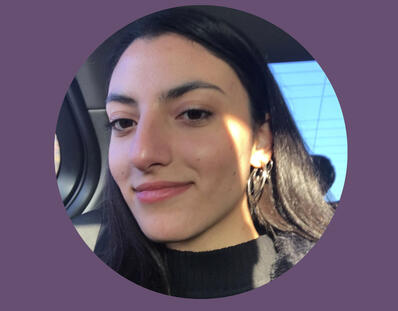
Nisan Gelebek
Researcher
Law

Siim Soots
Researcher
Law

Kristin Ilves
Designer
Liberal Arts in Humanities

Maksim Hazinski
Storyteller
Journalism
PROJECT REPORT
DESCRIPTION OF THE PROJECTThe goal of the life project Gamifying Human Rights Education was to create board games, aimed at sharing knowledge about Human Rights through a board game, to a specific target audience. Our group decided to target highschoolers (from ages 16 to 19) and to not only educate them about Human Rights but to encourage a debate and conversation with their peers. This is due to the reason that the members of our group found unanimously that it is the prime moment for teenagers to learn about or get a first experience of human rights. The fact that human rights are indisputably bound to morals will help them in their future lives to decide whether some event calls for the involvement of a judicial institution or not. The game might not be suitable for younger persons for the reasons of lack of interest and sufficient knowledge. The card game we created was inspired by the existing game Black Stories and based on existing court cases from the European Court of Human Rights.We believed that by using existing cases and making them entertaining through a question and answer based game it would be easier for us to get our audience interested in the topics. When deciding which cases to use we tried to choose the ones that were the most relevant, interesting or controversial, with the goal to create a debate and directly involve the players’ feelings and emotions. By picking European court cases we also made it more relevant and relatable to the players, who will mostly be from Estonia (cf implementation), but open enough that anyone in Europe would find the game interesting and somewhat relatable.The main goal was to create a final game with 50 unique cards, with one unique design and one court case per card, to test it on our target audience and to discuss implementations with youngsters. We were already able to see some benefits during the testing, with some players asking for more information, comparing the case they just learned about to some other case or story they heard about, and researching more about the topics. Many of the players stated that they did not know anything about human rights before playing and felt then more educated on the topic, even knowing which article number related to which right, after the testing session.In Estonian secondary schools today, human rights education is an aspect that often gets overlooked. It's not part of the regular curriculum, and that's a significant gap we aim to address with our project.
Our goal is to provide students with an engaging card game that teaches them about human rights in an interactive way. The game takes a dynamic and innovative approach to teaching human rights principles.
Without adequate knowledge and awareness of human rights principles, students may struggle to understand and address issues of discrimination, inequality, and social justice.
Thankfully a secondary school and a youth institution are open to cooperate with us and our project. This is a great opportunity to introduce and emphasise the importance of human rights education to schools, teachers and students.
GAMEPLAY DESCRIPTION1. A game master (chosen by the players) will pick a card from the deck and read the story to him/herself.
2. The game master will then show others the front side of the card, which contains a picture and an article of the European Convention on Human Rights. These articles guide the players. Every player is handed a list of human rights that are violated in the game, for guidance. The pictures contain details of the situation.
3. Players ask questions to figure out the story and the game master can answer only "yes", "no", or "it does not matter". Important parts of the story that the players must guess are in bold. The game master may give guiding questions to the players, if needed. Players must always keep in mind that the cases always contain a human rights violation by the state.
4. If the important parts of the story are guessed correctly by the players, the game master will read the whole story and the court’s opinion on that matter to them.
DESCRIPTION OF THE RESEARCH AND THE STAKEHOLDERSWhen it came to the research of the Stakeholders our team put together a list of different schools, youth centres and institutions that could be interested in the implementation of the game. We contacted multiple Youth Organisations such as Shokkin (Youth organisation based in Estonia) and Playversity (Inter-European project centred around Gamification) but sadly did not get any positive answer, since the testing and implementation of games in such organisations usually takes up to a full year, which did not match with our timeline, however we did consult with them over the project to get direct feedback from people specialised in the topics we were tackling.To get a sense of the target audience’s knowledge about the topic, the group interviewed a few students in the 11th grade. The results were that every one of them knew about the definition and the basic ideas of human rights, in addition to some specific rights. They also felt that various topics could be taught more effectively through games, referring constantly to some existing well-known board games.When doing research about the cases, it was essential to first identify a specific human rights issue that aligns with our objectives. This could range from freedom of expression to the right to a fair trial. Human rights are written by articles in the European Convention on Human Rights.
The researchers used the ECtHR website, which provides relevant information, including case law, judgments, and legal documents. Additionally, legal databases, such as HUDOC and Riigi Teataja, provide a broader selection of cases and relevant legal commentary.
When researching and briefing a case, it is important to fully understand the aspects of the case, which is why the researchers analysed every case individually. The researchers briefed over 50 human rights violation cases.
SUSTAINABILITY OF THE PROJECTOver the whole project the team made sure to test the cards on a variety of players, inside and outside their target audience, from different cultural and societal backgrounds, to ensure that the game was accessible and enjoyable for the target group. The goal was to find a balance between playability and the educational side of the game. Calibrating the game according to the test results was done by replacing complex sentences with easier vocabulary, shortening the text and making it more understandable. The game isn’t aimed at being sold and the team’s goal is to deliver a free printable version of the game to third parties and individuals who might be interested. The team has the whole ownership of the final board game but is currently still in discussions with Playversity to develop a more advanced version of the game that could be tested during Erasmus Trainings and delivered on the website for players to download all around Europe.The implementation of the game will contain our group members visiting the institution and giving a 15 minute lesson about the fundamental parts of human rights in Europe. It will be followed by the introduction of the game after which the players will form into groups of 4-6 people. The members will observe the gameplay, the deficiencies of the game and will take notes to further improve it. The implementation will consist of visiting grades 10 and 11 in an English class. The choice to conduct our project in an English class is due to the reason that the Estonian members found that it’s a subject where the students study a wide-range of topics, in addition to the fact that the game is in English as well.The members contacted various schools and youth institutions and managed to achieve a cooperation agreement with Gustav Adolf Grammar School and Mustamäe Public Youth Centre at the end of May. Due to the completion date of the game, combined with the exams and busy periods of the schools at the end of the year, we decided to implement the game after the stressful periods had passed. This also stems from the fact that we wanted to interfere with the study-schedules of the schools as little as possible.
RESULTUSAt the end of the project, the team produced a finished playable card game including 50 unique cards, 1 article card and 1 rule book.
ACTION PLAN
| TASKS | DEADLINE | SUDENT(S) RESPONSIBLE |
|---|---|---|
| Researching cases | 01.03 | Siim, Laura, Nisan |
| Game/Gamification ideas | 01.03 | Everyone |
| Game Idea Document | 01.03 | Maxim |
| Game idea presentation | 02.03 | Philomène |
| Mood board | 02.03 | Kristin |
| Audience Research Questions | 03.03 | Philomène |
| Audience Interviews | 08.03 | Siim |
| Action Plan | 08.03 | Everyone (Laura) |
| 10 Case Briefs | 09.03 | Laura, Siim, Nisan |
| Case Re-Wording (Storytelling) | 16.03 | Maxim, Philomène |
| Case Illustrations | 16.03 | Kristin |
| First Physical Prototypes | 18.03 | Everyone |
| 10 Finished Cards | 16.03 | Everyone |
| 10 Case Briefs | 16.03 | Siim, Laura, Nisan |
| Case Re-Wording (Storytelling) | 23.03 | Maxim |
| Case Illustrations | 23.03 | Kristin |
| 20 Finished Cards | 23.03 | Everyone |
| Mid-Term Report | 23.03 | Everyone (Philomène) |
| 10 Case Briefs | 23.03 | Siim, Laura, Nisan |
| Case Re-Wording (Storytelling) | 30.03 | Maxim |
| Case Illustrations | 30.03 | Kristin |
| 30 Finished Cards | 30.03 | Everyone |
| Mid-Term Week Feedback Session | 30.03 | Everyone |
| 10 Case Briefs | 30.03 | Siim, Laura, Nisan |
| Case Re-Wording (Storytelling) | 06.04 | Maxim |
| Case Illustrations | 06.04 | Kristin |
| 40 Finished Cards | 06.04 | Everyone |
| 10 Case Briefs | 06.04 | Siim, Laura, Nisan |
| Case Re-Wording (Storytelling) | 13.04 | Maxim |
| Case Illustrations | 13.04 | Kristin |
| Finished Card Game | 13.04 | Everyone |
| Reaching out to schools/organisations | 13.04-10.05 | Philomène, Maxim, Siim |
| Game Testing | 13.04-15.05 | Everyone |
| Project Portfolio | 09.05 | Everyone (Philomène) |
| Self Reflective Report | 09.05 | Everyone |
| Presentation of LIFE Projects | 15.05 | Everyone |
| Game implementation | 15.05-30.05 | Everyone |
| Game implementation at Gustav Adolf Grammar School | 26.05 | Everyone |
MEDIA COVERAGE
As part of our efforts to promote our project, we reached out to several media outlets, including Delfi and Postimees Estonian media. We contacted them via email in March 2023, providing information about our project and requesting collaboration in promoting it. Unfortunately, we received responses from both outlets declining our offer, citing that they were unable to collaborate on a university project without a paid promotion.Despite the initial setback, we continued to explore other avenues for promoting our project. We prepared a Facebook post design, which we shared on our social media channels. We also reached out to the student newsletter, providing them with information about our project and requesting that they feature it in their next issue.In our efforts to promote the project through media and university channels, we have also begun collaborating with local youth centers. We contacted several centers in our area, providing them with information about our game and requesting that they promote it to their visitors. We received positive responses from several centers, who were excited about the opportunity to promote a fun and educational game to their visitors. So now we are scheduling the meeting date to present the game.In addition to our efforts to promote the project, we have also been tracking its impact through user feedback and engagement. We have created surveys and questionnaires to gather feedback from players of the game, which we use to improve the game and make it more engaging. Overall, while we did not receive traditional media coverage for our project, we have been proactive in promoting it through various digital channels and collaborations with local youth centers and academic units. We have also been doing informal promotion of our project by speaking to people about it, and we have found that many are already interested. We believe that our game can make a positive impact in educating people about their human rights, and we are dedicated to spreading the word as widely as possible. In addition to these efforts, we have been in discussions with Playversity and Shokkin, two companies that have expressed interest in our project. However, due to their longer production times, they will likely advertise the game only after the ELU event is over.While our initial attempts to collaborate with media outlets were unsuccessful, we continued to explore other avenues for promoting our project. We reached out to the student newsletter and local youth centers, and are hopeful that these collaborations will help us reach a wider audience. We remain committed to promoting our project and plan to approach media outlets once again as our game grows and gains more recognition. We have contacted the university newsletter in May to ask them to promote our game and provide a link to a gaming session to people who would be interested. The game will be promoted in the next newsletter on 15th of May.
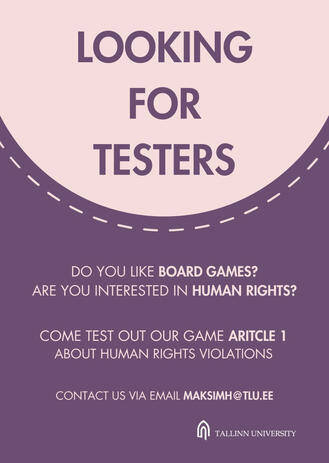
Looking ahead, we are excited to continue promoting our project and to explore new ways of reaching a wider audience. We plan to continue collaborating with local youth centers and academic units to promote the game and its message. Ultimately, our goal is to create a game that can help educate and empower people to better understand their human rights, and we are committed to doing everything we can to achieve that goal.
SELF REFLECTIONS
Nisan Gelebek - As a law student and, most importantly, a conscious person, I think that human rights are not sufficiently known, both by us students and by people from many different groups of professionals. In the modern world we live in, people face challenges every day. As a result of these experiences, they encounter situations where they need to benefit from the law. I think that every person should understand the injustice done to him before the court process, even if there is no legal sanction. It is crucial that individuals comprehend the injustices they face. That's why I wanted to take part in this project because I want everyone to know the basic articles of human rights. The contribution of the project to me was exactly as I mentioned. Thanks to my weekly tasks, I became familiar with the cases I solved and the articles of the European Convention on Human Rights. By the end of this project, I will be someone who knows his rights and better understands when to seek legal aid. The most important purpose of our game, especially for young students, is to teach these rights through a game. In addition, the project has allowed me to deal with more complex and significant cases. Examining the court processes of people, both from my own country and from other countries, and making them easier to understand helped me become more integrated with the branch of law.Siim Soots - As a law student I find it important that in order to get a solid overview of a branch of law, practice is needed. It differs from ‘’normal’’ practice, as we didn’t solve cases, but it is still nonetheless somewhat instructive due to the reason that as I combed through the European Court of Human Rights cases, I saw how the convention articles were applied in everyday lives. Nevertheless I find the experience of teamwork in a group the most important experience. This is due to the reason that I found that our group works efficiently if the members do their part correctly and trust others to do their part correctly as well. I am happy that the project is done and I am somewhat satisfied with the result we achieved (a playable card game).Kristin Ilves - As a Liberal Arts in Humanities student, the topic of human rights comes up often and leads to many interesting discussions in different classes, so being a part of a project that combines an important topic as well as a personal interest (games), sounded fun and like a project I could learn a lot from. My role for this project however was the designer/illustrator as I also have a passion for drawing. My job was to provide illustrations for each card, as well as come up with the designs of the cards(color, font, layout, etc.). The main thing I learned from this project was getting to know some of the articles more thoroughly since throughout the project I had to read through the cases provided to me and read the meaning of each article over and over again in order to provide a fitting illustration and card design. Another thing I learned was visual problem solving. Figuring out a way to create an illustration that didn’t look too similar to another case and figuring out what details to focus on and illustrate in each case were issues that often came up during this project. Personally I'm happy with what we managed to accomplish as most of the members, along with myself, had no prior knowledge of game design and gamification.Laura Kurvits - I am a law student with interest in international law and human rights. This project aligned perfectly with those interests, as my main tasks were case research and briefing. With this project I had the opportunity to go in-depth with the ECtHR cases, which allowed me to better understand the system behind human rights proceedings. This project means a lot to me because it gave us the opportunity to teach human rights to others. I am very happy with the team that I got to work with. We understood each other well and helped each other whenever we could. I learned a lot when working with other students from different countries - their knowledge and insights about the cases we were handling gave everyone a good understanding about some problems from their countries. Learning together about gamification and inventing a game together has been a very memorable experience.Maksim Hazinski - As a journalism student, I was excited to take part in this project as it allowed me to explore storytelling in a new way. My role in this project was to develop the stories and narratives for the game cards, which meant that I had to read and analyse the ECtHR cases to extract the most essential and interesting details. This was a great opportunity for me to improve my analytical skills and to learn more about human rights issues. Additionally, working with a diverse team allowed me to gain new perspectives on human rights and law from my teammates who came from different backgrounds. Throughout this project, I have learned a lot about the importance of teamwork and collaboration. It was great to see how each member contributed their skills and knowledge to create a successful project. I am also proud of the game we created, as it is an innovative and engaging way to educate people about human rights.Philomène Perroches - As a Crossmedia Student and a Kindergarten teacher I have some experience in project management and in gamification, I was really excited to share my knowledge and learn from my teammates. My role in this project was to manage the tasks, lead the team and produce the mandatory assignments. This consisted in texting in the group chat, organising and coordinating the meetings, giving feedback of my teammates’ work, and contacting the supervisor when needed. This project was really exciting for me, I really enjoyed working with people from different horizons and studies and to learn from them. I believe our team managed to collaborate in an efficient and pleasant way, and as the team leader I am really grateful for all the members for delivering and communicating over the whole project.
THE PLAYING CARDS
FRONT OF THE CARD
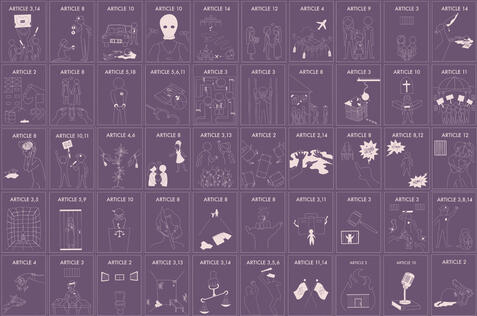
BACK OF THE CARD
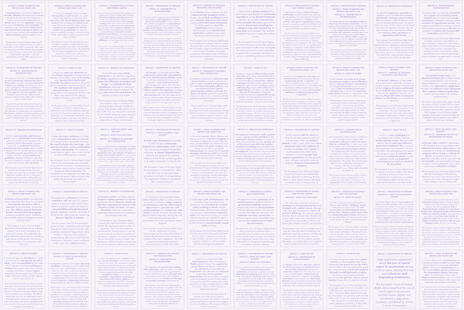
SPECIAL CARDS

FRONT OF THE CARD
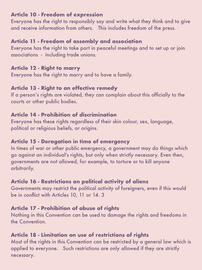
BACK IF THE CARD

FRONT OF THE CARD
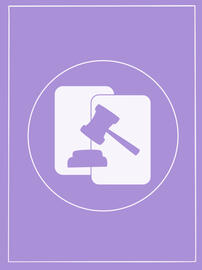
BACK OF THE CARD